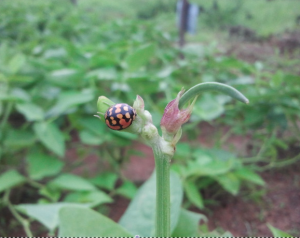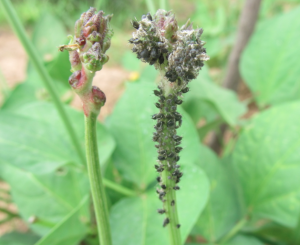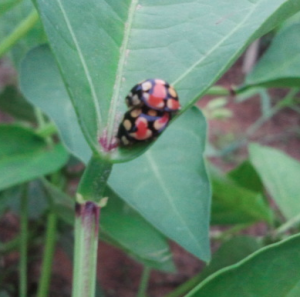 I headed straight up North without hanging out with my folks in the South, hoping I could complete work in time then follow up with fun. Well, things did not go as intended.
I headed straight up North without hanging out with my folks in the South, hoping I could complete work in time then follow up with fun. Well, things did not go as intended.
The field had been deelyp ploughed while the ever-frowning sun greeted the early mornings with its scorching rays. Under such stress, two balls of warm-up “kenkey” (boiled rounded semi-fermented corn dough) with a liberating smoked tilapia and “shito” (a delicate hot sauce) graced by a can of chilled Fanta lemon was just the perfect adaptive response strategy to face what the day brings.
Cowpea was never the idea to begin with, let alone chasing and driving away invading livestock and mysterious pests on a farm with no shade tree to seek refuge at midday.
I set out to explore the possibility of improving plants’ tolerance to savanna field conditions while improving productivity with an FES-branded biostimulant with a sugar alcohol, using soybean as a model plant. To achieve this, I am measuring yield and physiological responses of multi-stressed study plants.
I never anticipated ladybird beetles, grasshoppers, caterpillars, aphids, sheep and goats would all be stressors.
It had not rained since January, although most local farmers had prepared their fields, eagerly expecting the early rains. Meanwhile, the growing season (July-October) was fast approaching. Against warning by residents and technicians, I planted in June. Little did I know that all the lingering, hunger-stricken, indomitable pests were seeking a scapegoat crop to consume…
Tolon-Kungumbu is one of the 20 districts of the Northern region of Ghana. Unlike Southern Ghana, the North experiences a single rainy season of three months followed by seven months of hard-core dry season. High temperatures (35-45°C, or 95-113 °F) that rapidly dry-eroded soils follow the sporadic, torrential rains. Thus, the soil is impoverished in nitrogen and thereby supports mostly leguminous varieties of beans, peas, millet, sorghum and sparsely distributed shrub-trees (with characteristic compound-pinnate leaves). Dry spells sometimes occur in the rainy season. Prolonged dry spells means famine in the North mostly resulting in migration by youth and cattle herdsmen towards southern Ghana.
Initial pesticides application could not deter the pests. After almost losing the entire week-old seedlings, I stepped up the concentration, and yet the pests resurfaced three days afterwards. What obstinacy!
That same week, US and the European markets banned export of fruits by Ghana and 11 other African nations for alleged food security threat due to pesticide and pest infestation. I now appreciate the ordeal farmers and agronomist had to go through year round.
As you read, entire, expensive shipments from several months of hard work are lost due to the swift-adapting pesticide-resilient menace of sub-Saharan pests. Yet in the news, negligence was the subject matter. In this era of business competiveness and economic hardship, which investors will put their reputation and business on the line?
What more could they do? You have no idea. To buttress the subject, my investigation with the EPA of Ghana in response to food poisoning incidents in 2002 revealed that farmers had to apply pesticides up until the morning of harvest. Otherwise, green veggies would all turn yellow-brown (thanks to the nematodes) in a matter of hours. This is against the 14-day pre-harvest period of no pesticide, but who would buy a brown lettuce?
Well, thanks to the international customs and standard boards, we also can’t compromise on the health and safety of others with “our little backyard problems.”
Lest I forget, I discovered some fascinating attributes of the “Songatra” cultivar (a drought tolerant variety) that I’m using. The leaves are sugary: plants generally accumulate sugars in leaves, and these sugars are believed to regulate leaf moisture to slow down dehydration during drought and heat stress. But if sugar accumulation in leaves aids heat and drought tolerance, why would they avoid an uncomfortable situation only to embrace a killer pest, which may be more attracted to the pea thanks to its sweetness? Oh poor pea, another miscalculation. 